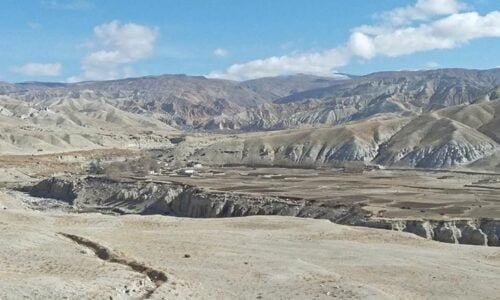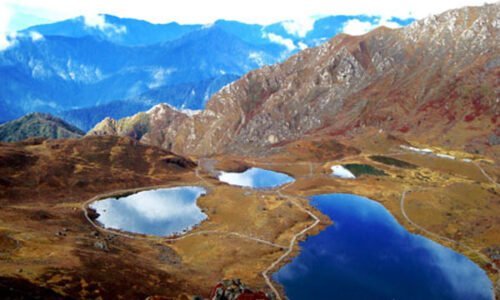Grand Mani Rimdu Festival in the Everest Region
25 Oct 2024 7 min to read
An ancient Mani Rimdu is a unique festival that is grandly celebrated annually by the Sherpa ethnicity in Solukhumbu, Nepal. The Grand Mani Rimdu Festival in the Everest Region is particularly celebrated at Tengboche, Thame, and Chiwong Monasteries. The Mani Rimdu festival originated in the early 1900s at Rongbuk Monastery in Tibet. The ‘Mani’ refers to a portion of the chant dedicated to Chenrezig, and ‘Rimdu’ signifies small red pills that are sanctified during the festival. Mani Rimdu festival is celebrated according to the Tibetan lunar month calendar, generally in October/November months.
The Mani Rimdu festival is celebrated by Buddhists in the Everest region primarily to commemorate the founding of Buddhism by Guru Rinpoche Padmasambhava. It is a sacred ceremony consisting series of events over 19 days, which also includes a 3-day public festival. The ceremony exhibits a series of 13 acts amalgamating religious ceremony, dance, and drama elements. The Sherpa community along with the Lama monks perform rituals and celebrate together at the monastery which promotes global welfare, unity, and religious harmony.
In this long 19-day festival, daily rituals are performed including 24-hour puja and the creation of the holy Sand Mandala. The 3-day public festival is observed with chanting prayers, the empowerment ceremony (Wong), traditional and colorful mask dances (Chham and Chhingpa), and culminates with the Fire Puja (Jinsak) and disassembling the sand mandala. Numerous locals and foreign visitors attend this festival where they get to witness the rich local culture and tradition. Mani Rimdu festival is a great opportunity for every attendee to deeply understand the teachings that emphasize suppressing demons and rewarding the virtuous. Below are listed the sacred rituals and key ceremonies to understand the sacred events briefly:
Sacred Rituals and Ceremonies
The series of sacred rituals and ceremonies are performed before the public day festival. The prime sacred rituals and ceremonies are as follows:
The Sand Mandala
The Sand Mandala is the major element of the Mani Rimdu festival which is a symbolic and intricate design made from colored sand. The Sand Mandala symbolizes transience and the spirit of a pure universe. The Sand Mandala indicates the palace of Garwang Thoze Chenpo, (the Lord of the Dance). It takes several days to complete the sand mandala which is constructed stepwise by surrounding it with protective dagger deities. The center of the Mandala is placed with a bowl of Mani Rilwu pills, symbolizing spiritual medicine. Throughout the festival, the Lama monks chant prayers countless times to radiate compassion and blessing outward to all attendees (locals and foreign visitors).
24-Hour Puja (Rituals)
The 19-day festival starts with the 24-hour puja (rituals) performed by lama monks to sanctify several holy items. The rituals are essential as they help to create a spiritual ambiance for the festivities. The monks purify the Sand Mandala, Mani Rilwu Pills (spiritual medicine), Tshereel (pills for long life), and Torma (ritual cakes).
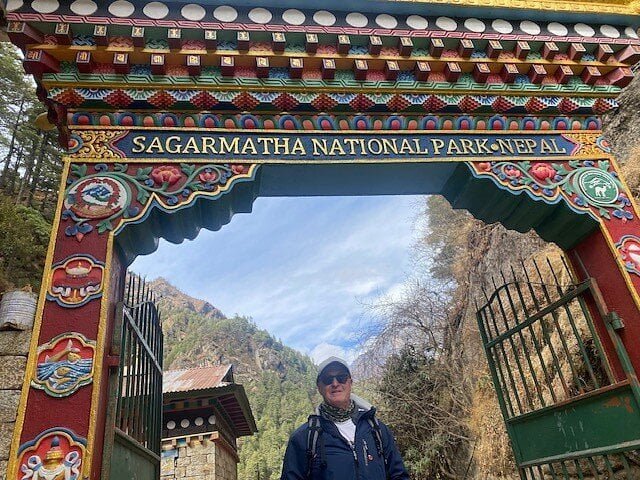
Key Ceremonies during the Mani Rimdu Festival (3-Day Public Festival)
After several days of sacred rituals and ceremonies, the key ceremonies are performed as a public festival that lasts for 3 days. The key ceremonies during the Mani Rimdu 3-day public festival are briefly discussed below:
Day 1: The Empowerment (Wong)
The Empowerment or Wong is a key ceremony that marks the opening public ceremony of the Mani Rimdu festival. It usually takes place on the full moon day of the ninth/tenth Tibetan lunar month (October/November). The head Lama Monk or Rinpoche conducted the sacred rituals bestowing long life, happiness, and prosperity on attendees. A sacred thread Mani Rilwu and Tshereel pills, signifying blessings and spiritual nourishment are distributed to all attendees.
Day 2: The Dances (Chham and Chhingpa)
The second day highlights the traditional dances known as ‘Chham’. The core theme of these traditional dances offer support to righteous deeds leading to Buddhahood. Six dancers representing Ngag-pa (Tantric magicians), perform dances and offer spiritual nectar called Ser-Kyem. They offer this spiritual nectar to the Lama (spiritual guide), Yidam (personal deity), Khandro (wisdom dakini), and Shi-Dak (Earth deities).
The Chhingpa Dance
The Chhingpa dance is another engaging act portraying the Four Protecting Ghings defending Buddhism against evil forces. Various musical instruments including cymbals are played. And, the dancers wearing bright, and smiling masks, perform in rhythmic movements, sometimes with playful antics to create fun and joy in the audience.
Day 3: The Fire Puja (Jinsak)
On the final day, the fire puja known as Jinsak is organized in the courtyard. The puja is mainly emphasized on Agni (the fire) and the Mandala deities that are attended by the locals. The sole purpose of this puja is to remove negativity from the world which is done through grain and butter offerings. These offerings also maintain the festivals’ spirit of purification. After the puja is concluded, the Sand Mandala is disassembled and offered to the serpent gods (Nagas) at a nearby spring. The cycle of creation is completed which concludes the teachings of the grand Mani Rimdu festival.
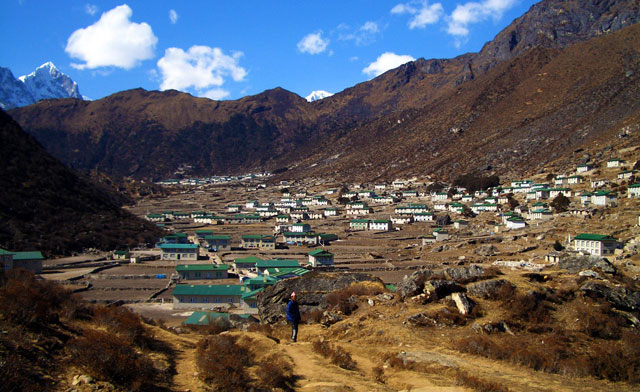
When is the Mani Rimdu Festival celebrated?
Mani Rimdu at Tengboche Monastery will be celebrated on November 15, 16, and 17, in the year 2024.
Mani Rimdu festival is generally celebrated according to the Tibetan lunar month which falls in October or November on the English calendar. There are different monasteries in the Khumbu Everest region, so the dates for the Mani Rimdu festival vary by monastery. Mani Rimdu is celebrated annually during the 9th Tibetan lunar month, typically in October or November on the English calendar at the largest Tengboche Monastery. Only after six months the festivities at Tengboche, Thame Monastery celebrate the Mani Rimdu festival. In contrast, Chiwong Monastery celebrates the Mani Rimdu festival in the 10th Tibetan lunar month, which generally falls in November.
| Monasteries in the Everest Region | Festival months |
| Tengboche Monastery | Every 9th Tibetan lunar month (Oct/Nov) |
| Chiwong Monastery | Every 10th Tibetan lunar month (Nov) |
| Thame Monastery | March/April (only 6 months after celebrating at the Tengboche Monastery) |
Conclusion
Mani Rimdu festival in the Everest region holds great religious, cultural, and spiritual significance. The unity and harmony in Sherpa ethnicities while celebrating the festival with great devotion is captivating. The dedication of the Sherpas and Lama Monks while planning and preparing for each sacred ceremony is truly incredible. The diverse vibrant mask dances and dramas, the empowerment ceremony, the special offerings, the fire puja, and the chanting prayers kindle the festival. To sum up, to experience religious harmony, rich cultural heritage, and spiritual aura all under one roof is pious and remarkable.
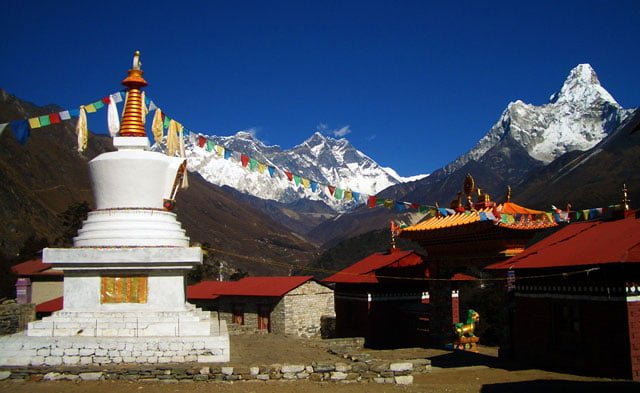
Sample Itineraries for the Mani Rimdu Festival in the Everest Region
Itinerary 1 (Tengboche Monastery)
Day 01: Kathmandu to Lukla (flight) (2860 m), trek to Phakding
Day 02: Phakding (2610 m) to Namche Bazaar (3440 m)
Day 03: Acclimatization Day
Day 04: Namche Bazaar to Tengboche (3867 m), Festival Day 1 (The Wong)
Day 05: Festival Day 2 (Chham and Chhingpa Dances)
Day 06: Festival Day 3 (Jinsak, the Fire Puja)
Day 07: Tengboche to Namche Bazaar (3440 m)
Day 08: Namche Bazaar to Lukla (2860 m)
Day 09: Lukla to Kathmandu (flight)
Itinerary 2 (Chiwong Monastery)
Day 01: Drive to Dhap Bazaar (2850 m)
Day 02: Trek to Jhapre (2815 m)
Day 03: Trek to Pikey Peak Base Camp (3640 m)
Day 04: Trek to Pikey Peak (4065 m), descend to Jase Bhanjyang (3520 m)
Day 05: Trek to Junbesi (2700 m), Hike to Thupten Choling Monastery (2800 m)
Day 06: Trek to Chiwong Monstery (2750 m), Festival Day 1 (The Wong)
Day 07: Festival Day 2 (Chham and Chhingpa Dances)
Day 08: Festival Day 3 (Jinsak, the Fire Puja)
Day 09: Trek to Salleri (2362 m)
Day 10: Drive to Kathmandu (1400 m)
